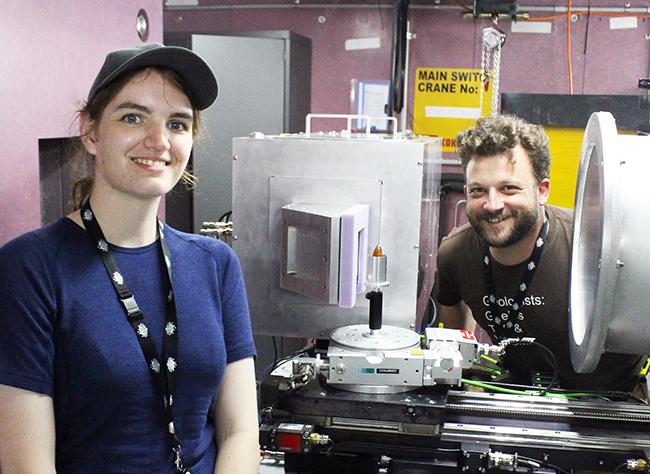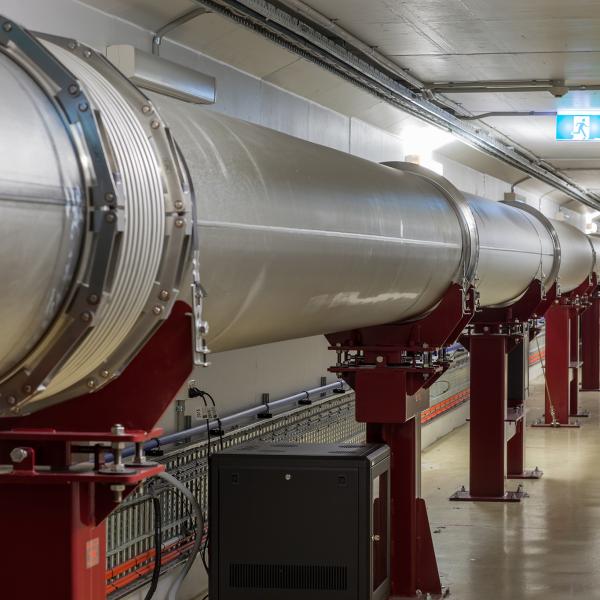

Published on the 28th October 2021 by ANSTO Staff
Key Points
-
Wildfires played a key role in the evolution of plants in many parts of the world
-
Some plants, including many Australian natives, became dependent on fire for survival
-
Advanced imaging techniques at ANSTO reveal the structure of fossilised plants non-destructively
Researchers based at Monash University and the Swedish Museum of Natural History have pioneered the use of nuclear imaging techniques at ANSTO’s Australian Centre for Neutron Scattering to resolve long-standing gaps in knowledge of the evolution of plants, including Australian natives, that adapted to depend on fires.
Their work has highlighted the key role of wildfires* in the evolution of floral ecosystems.
Dr Chris Mays, a Postdoctoral Researcher at the Swedish Museum of Natural History and Research Affiliate at Monash University, has used fossils of plant reproductive structures, like pine cones, to show how they have adapted to fire.
The fire-adapted fossil plant Protodammarareimatamoriori from the mid-Cretaceous (c. 92 million-years-old) of the Chatham Islands. Animated volume rendering of neutron tomographic reconstruction
Plants are known to have adapted during two pivotal intervals in their evolutionary history: a mass extinction event in the end Permian period (252 million years ago) and the rise of the flowering plants during the mid-Cretaceous hothouse period (120–95 million years ago).
“These extreme warming periods were evolutionary ‘bottlenecks’, through which only fire-adapted plants survived. The evolutionary legacy is all around us in Australia, where a huge proportion of the plants today have fire-adaptive traits,” said Mays.
Using neutron tomography on Dingo, the researchers were able to virtually extract images of amber from within fossils and differentiate plant tissues.

Dr Maggie-Anne Harvey (left) and Dr Andrew Langendam preparing fossil plant specimens on Dingo
“Neutron tomography is an ideal method for non-destructive, three-dimensional imaging of organically preserved, or ‘coalified’, fossil plants. These are the most common types of plant fossils in the rock record,” said Mays.
Because neutrons can easily penetrate through dense sediments, they can be used to see details of extremely fragile fossils, like those of coalified plants, without the need for meticulous extraction. This minimalist approach to fossil preparation ensures that such delicate fossils remain well-preserved in their protective sediments.
The plant fossils are hydrogen-rich, which means they stand out in contrast to the surrounding rock matrix when imaged with high-resolution neutron tomography.
“Neutrons can successfully differentiate fossil plant tissue that is compositionally similar, where other techniques routinely fail,” said Mays.
X-ray tomography on the Imaging and Medical beamline at the Australian Synchrotron was also undertaken to supplement the neutron investigations.
The research team noted that X-ray tomography was better suited for anatomically preserved, but scarce, permineralised plants. In this type of fossilisation, mineral deposits permeate the entire structure of the plants, sometimes preserving extremely fine details.
Synchrotron X-rays are ideal for differentiating such subtle compositional differences on this scale.
Their research on plant fossils has been reported in a series of academic publications over the last five years.
They demonstrated the utility of neutron tomography in imaging plant fossils in varying states of preservation for the first time in a study in Palaeontologia Electronica in 2017.
Their most recent publication,“Neutron tomography, fluorescence and transmitted light microscopy reveal new insect damage, fungi and plant organ associations in the Late Cretaceous floras of Sweden”, was reported in the journal GFF in September 2021.
The work has given us insights into plant evolution while preserving precious samples, which are part of the natural heritage of Australia, China, Mongolia, New Zealand and Sweden.
The research has generated a groundswell of interest within the international palaeobotanical community.
This research was a winner in ANSTO’s Neutron and Deuteration Impact Awards, demonstrating their relevance to environmental change, one of Australia’s research priorities.
*known as bushfires in Australia




